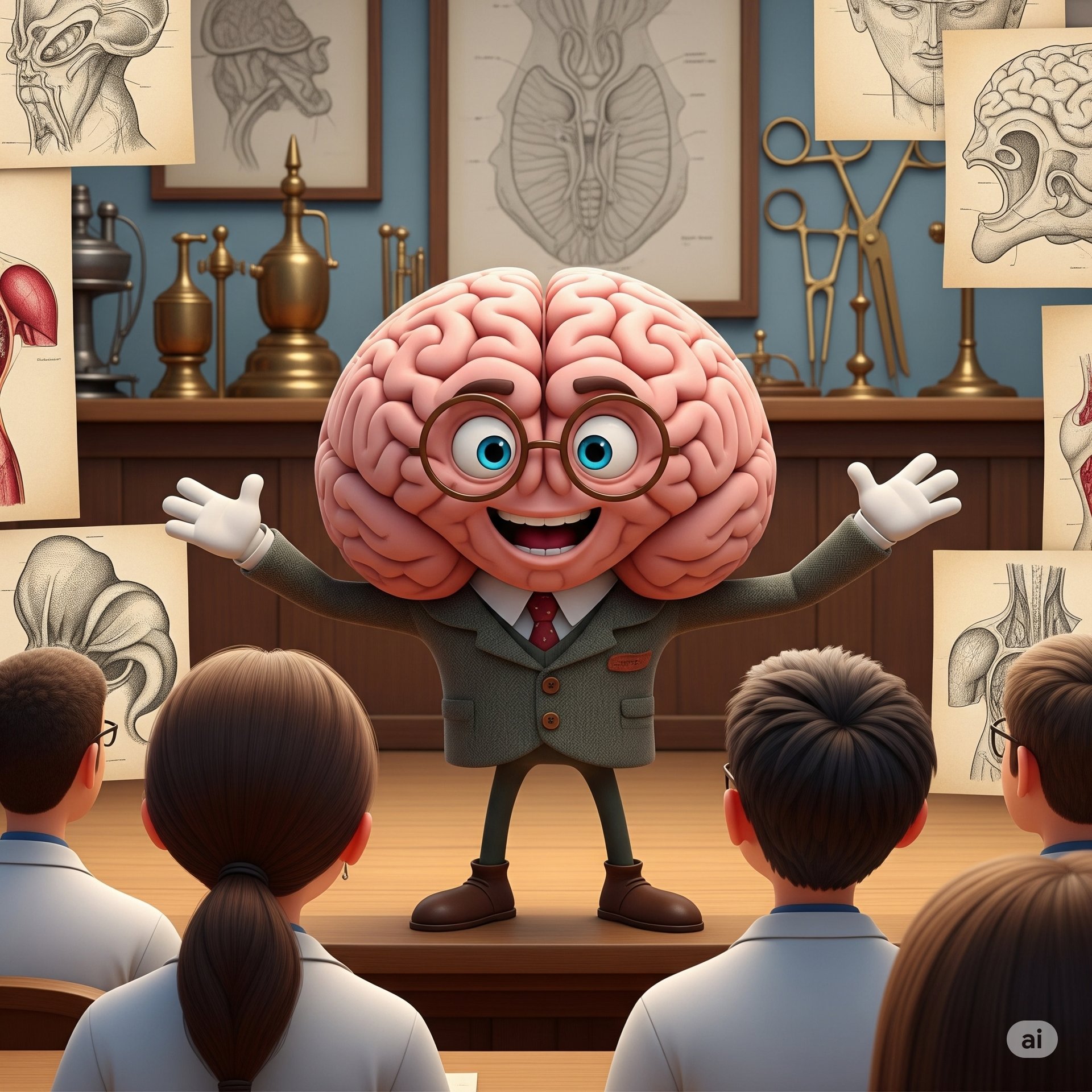THEMEDPRACTICALEXAM.COM

History Taking Format for Neurogenic Syncope
1. Patient Details
Name, Age, Sex, Occupation, Address
2. Presenting Complaint
Brief description of the episode(s) of loss of consciousness (LOC) or fainting
Duration and frequency of episodes
3. History of Presenting Illness
Description of the Event:
Ask the patient (and any witnesses) to describe exactly what happened before, during, and after the episode.
Was there a warning (aura, visual changes, dizziness, palpitations, nausea, sweating, blurred vision, lightheadedness)?
What was the patient doing at the time (standing, sitting, lying, during urination/defecation/coughing, emotional stress, pain, after exercise)?
Was there any trigger (sudden standing, prolonged standing, heat, pain, fear, emotional stress, sight of blood)?
Onset and Duration:
Sudden or gradual onset?
How long did the episode last (seconds, minutes)?
Was the loss of consciousness complete or partial?
Position:
Was the patient standing, sitting, or lying down?
Did the episode occur on standing up quickly (orthostatic hypotension) or in the supine position?
Prodrome (Preceding Symptoms):
Dizziness, visual changes, tinnitus, nausea, sweating, palpitations, weakness, aura, confusion
During the Episode:
Was there loss of muscle tone (fall to ground)?
Any abnormal movements (twitching, jerking, tonic-clonic activity)?
Tongue biting (especially lateral), incontinence (urine or stool), cyanosis
Was the patient pale or flushed?
Post-event (Recovery):
How quickly did the patient recover? (Immediate, within seconds/minutes, or prolonged confusion/drowsiness)
Any lingering weakness, confusion, headache, or neurological deficit?
Witness Account:
If available, ask someone who observed the episode for their description.
4. Past Medical History
Previous similar episodes
History of neurological disorders (epilepsy, migraine, stroke, TIA, Parkinson’s disease)
Cardiovascular history (arrhythmias, heart disease, hypertension)
Diabetes, metabolic or endocrine disorders
5. Drug History
All current and recent medications (including over-the-counter, herbal, and recreational drugs)
Any recent changes in medication or dosage
Medications known to cause hypotension or syncope (antihypertensives, diuretics, antidepressants, antipsychotics, antiarrhythmics)
6. Family History
Family history of syncope, epilepsy, sudden cardiac death, arrhythmia, or neurological disorders
7. Social and Personal History
Alcohol, tobacco, or illicit drug use
Occupational exposures
Recent travel or infectious contacts
Sleep patterns, stress, and psychological factors
8. Systemic Enquiry
Fever, weight loss, night sweats (infection, malignancy)
Chest pain, palpitations, breathlessness (cardiac causes)
Visual, speech, or swallowing disturbances
Gait or balance problems
Headache, neck pain, or recent trauma
Special Notes:
Always clarify if the episode was true syncope (transient, self-limited loss of consciousness with spontaneous recovery and loss of postural tone)67.
Differentiate from seizure, psychogenic events, metabolic causes, and cardiac syncope using key historical features235678.
Use mnemonics like the “five Ps” (Precipitant, Prodrome, Position, Palpitations, Post-event) and “five Cs” (Colour, Convulsions, Continence, Cardiac problems, Cardiac death in family) to structure your questions28.

Case History
Personal Details:
Mr. Suresh Patel, 78-year-old male, retired accountant
Presenting Complaint:
Recurrent episodes of transient loss of consciousness (syncope) for 4 months
History of Presenting Illness:
Mr. Patel reports experiencing multiple episodes of fainting over the last 4 months. The episodes typically occur when he stands up from a sitting or lying position, often after a few minutes of standing. He describes a sensation of dizziness and lightheadedness before losing consciousness. According to his wife, he looks pale and unsteady just before the episodes, and the loss of consciousness lasts only a few seconds, with rapid and complete recovery. There is no tongue biting, incontinence, or confusion after the episodes.
He denies any chest pain, palpitations, shortness of breath, or visual disturbances before or after the events. There is no history of trauma, fever, recent infection, or new medications. The frequency of the episodes has increased recently, now occurring several times per week.
Mr. Patel has a history of Parkinson’s disease, diagnosed 5 years ago, and takes regular levodopa/carbidopa. He has no history of diabetes, coronary artery disease, or arrhythmia. Previous cardiac workup, including ECG and echocardiogram, was unremarkable.
Past Medical History:
Parkinson’s disease (5 years)
No diabetes, hypertension, or heart disease
Drug History:
Levodopa/carbidopa
No antihypertensives, diuretics, or other medications
Family History:
No family history of syncope, sudden cardiac death, or neurological disorders
Personal and Social History:
Non-smoker, does not consume alcohol
Lives with spouse, independent in daily activities
Systemic Enquiry:
No fever, weight loss, night sweats
No chest pain, palpitations, or breathlessness
No visual, speech, or swallowing disturbances
Case Summary
A 78-year-old male with Parkinson’s disease presents with recurrent, brief syncopal episodes on standing, preceded by lightheadedness and pallor, with rapid recovery and no post-ictal confusion. Cardiac evaluation is unremarkable.
Differential Diagnosis
Neurogenic Orthostatic Hypotension (nOH) due to Autonomic Dysfunction
Most likely, given the history of Parkinson’s disease, orthostatic triggers, and absence of cardiac findings6.
Vasovagal (Neurocardiogenic) Syncope
Cardiac Syncope (Arrhythmia, Structural Heart Disease)
Seizure
Medication-induced Hypotension
Unlikely as the patient is not on antihypertensives or diuretics.

1. What is syncope?
Syncope is a sudden, transient loss of consciousness and postural tone, with spontaneous and complete recovery, usually due to transient global cerebral hypoperfusion.
2. What is neurogenic syncope?
Neurogenic syncope refers to loss of consciousness due to neurological causes, most commonly autonomic dysfunction leading to orthostatic hypotension, but also includes conditions like seizures and certain brainstem lesions.
3. What are the main neurological causes of syncope?
Neurogenic orthostatic hypotension (autonomic failure)
Vasovagal (neurocardiogenic) syncope
Carotid sinus hypersensitivity
Seizures (though technically not true syncope, but may mimic it)
Brainstem TIA or stroke
4. How does neurogenic orthostatic hypotension present clinically?
It presents as dizziness, lightheadedness, or fainting upon standing, often with rapid recovery, and is commonly seen in disorders like Parkinson’s disease, multiple system atrophy, or diabetic autonomic neuropathy.
5. What is the difference between syncope and seizure?
Syncope is due to transient cerebral hypoperfusion and is usually brief, with rapid and complete recovery, and no post-ictal confusion. Seizures may have tonic-clonic movements, tongue biting, incontinence, and post-ictal confusion or drowsiness.
6. What is the typical prodrome in neurogenic syncope?
Patients may experience dizziness, visual dimming, lightheadedness, nausea, or sweating before losing consciousness.
7. What is orthostatic hypotension?
Orthostatic hypotension is a sustained drop in systolic blood pressure of ≥20 mmHg or diastolic BP of ≥10 mmHg within 3 minutes of standing.
8. What neurological diseases are commonly associated with neurogenic orthostatic hypotension?
Parkinson’s disease
Multiple system atrophy
Pure autonomic failure
Diabetic autonomic neuropathy
9. How do you differentiate neurogenic from cardiac syncope?
Neurogenic syncope is typically triggered by standing and has a prodrome; cardiac syncope may occur suddenly without warning and is often associated with exertion or arrhythmias.
10. What investigations are helpful in evaluating syncope?
Orthostatic blood pressure measurement
ECG and cardiac monitoring
Tilt-table test
Autonomic function tests
Blood glucose
EEG if seizure is suspected
11. What is the role of the tilt-table test?
The tilt-table test helps to reproduce symptoms and document blood pressure and heart rate changes with postural changes, aiding in the diagnosis of orthostatic hypotension or vasovagal syncope.
12. What is carotid sinus hypersensitivity?
It is a condition where pressure on the carotid sinus (e.g., turning the neck, wearing a tight collar) triggers excessive vagal response, leading to bradycardia, hypotension, and syncope.
13. What are the management strategies for neurogenic orthostatic hypotension?
Non-pharmacological: Increase salt and fluid intake, slow position changes, compression stockings
Pharmacological: Fludrocortisone, midodrine, droxidopa
Adjusting medications that may worsen hypotension
14. What is the significance of post-ictal confusion?
Post-ictal confusion is typical of seizures, not syncope, and helps in differentiating between the two.
15. What is vasovagal syncope and how does it differ from neurogenic orthostatic hypotension?
Vasovagal syncope is a reflex-mediated syncope triggered by emotional distress, pain, or prolonged standing, while neurogenic orthostatic hypotension is due to autonomic failure and occurs primarily on standing.
16. What is the importance of witness accounts in syncope evaluation?
Witnesses can provide crucial information about the patient’s appearance, movements, duration of unconsciousness, and recovery, which helps differentiate syncope from seizures or other causes.
17. Why is it important to ask about tongue biting and incontinence?
Tongue biting (especially lateral) and incontinence are more suggestive of a seizure than syncope.
18. What are the risks associated with recurrent syncope in the elderly?
Increased risk of falls, fractures, head injury, and reduced quality of life.
19. What is pure autonomic failure?
A neurodegenerative disorder characterized by isolated autonomic dysfunction, leading to neurogenic orthostatic hypotension without other features of Parkinsonism or cerebellar signs.
20. Why is medication review important in syncope?
Certain medications (antihypertensives, diuretics, dopaminergic drugs) can worsen orthostatic hypotension and increase the risk of syncope.